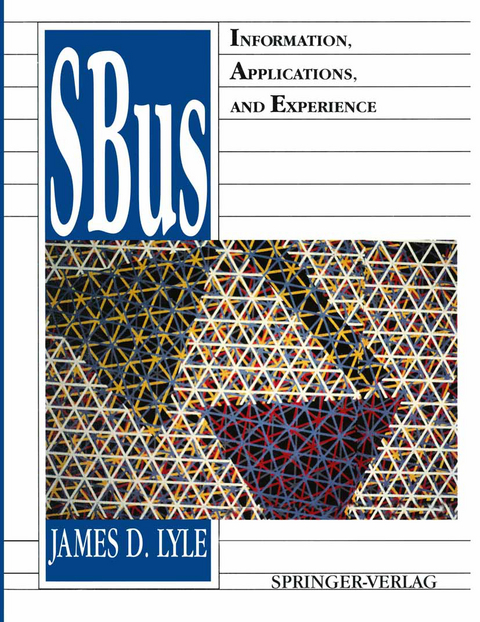
SBus
Springer-Verlag New York Inc.
978-1-4612-7730-9 (ISBN)
Workstation and computer users have an ever increasing need for solutions that offer high performance, low cost, small footprints (space requirements), and ease of use. Also, the availability of a wide range of software and hardware options (from a variety of independent vendors) is important because it simplifies the task of expanding existing applications and stretching into new ones. The SBus has been designed and optimized within this framework, and it represents a next-generation approach to a system's I/O intercon nect needs. This book is a collection of information intended to ease the task of developing and integrating new SBus-based products. The focus is primarily on hardware, due to the author's particular expertise, but firmware and software concepts are also included where appropriate. This book is based on revision B.O of the SBus Specification. This revision has been a driving force in the SBus market longer than any other, and is likely to remain a strong influence for some time to come. As of this writing there is currently an effort (desig nated P1496) within the IEEE to produce a new version of the SBus specification that conforms to that group's policies and requirements. This might result in some changes to the specifica tion, but in most cases these will be minor. Most of the information this book contains will remain timely and applicable. To help ensure this, the author has included key information about pro posed or planned changes.
1 Why the SBus?.- 1.1 Why Design a New Bus?.- 1.2 What is the SBus?.- 1.3 Architecture..- 1.4 Conclusions..- 2 Contrasts with Other Buses.- 2.1 Traditional Backplane Buses..- 2.2 Daughter-card Buses..- 2.3 Mezzanine Buses..- 3 Hardware Concepts.- 3.1 Fundamental Concepts..- 3.2 Components..- 3.3 Configurations..- 3.4 Protocol..- 3.5 Performance and Latency..- 3.6 Electrical Specification..- 3.7 Mechanical Specification..- 4 Firmware Concepts.- 4.1 The Open Boot Architecture..- 4.2 FCode and Toolkit..- 4.3 Survival Forth..- 5 Pitfalls to Avoid.- 5.1 Technology Issues..- 5.2 Specification Issues..- 5.3 Protocol Issues..- 5.4 Mechanical Issues..- 5.5 Firmware and Software Issues..- 6 Think Small and Low Power.- 6.1 Minimizing Space..- 6.2 Minimizing Power Consumption..- 6.3 Other Options..- 7 Noise, ESD, and EMI Control.- 7.1 Reducing Noise Generation and Sensitivity..- 7.2 ESD Protection and EMI Reduction..- 8 Getting Your Hands Dirty.- 8.1 Inter-Operability..- 8.2 Design Review Checklist..- 8.3 Pre-Test Guidelines..- 8.4 Troubleshooting Clues..- 9 SERFboard User’s Guide.- 9.1 Description..- 9.2 Programmer’s Model..- 9.3 SBus Interface..- 9.4 Prototype Interface..- 9.5 Schematics..- 9.6 FCode and Software Drivers..- 9.7 PAL Programs..- 9.8 Application Examples..- 9.9 Accessories and Information..
| Zusatzinfo | IX, 351 p. |
|---|---|
| Verlagsort | New York, NY |
| Sprache | englisch |
| Maße | 189 x 244 mm |
| Themenwelt | Mathematik / Informatik ► Informatik ► Netzwerke |
| Mathematik / Informatik ► Informatik ► Theorie / Studium | |
| Informatik ► Weitere Themen ► Hardware | |
| Technik ► Elektrotechnik / Energietechnik | |
| ISBN-10 | 1-4612-7730-2 / 1461277302 |
| ISBN-13 | 978-1-4612-7730-9 / 9781461277309 |
| Zustand | Neuware |
| Haben Sie eine Frage zum Produkt? |
aus dem Bereich


